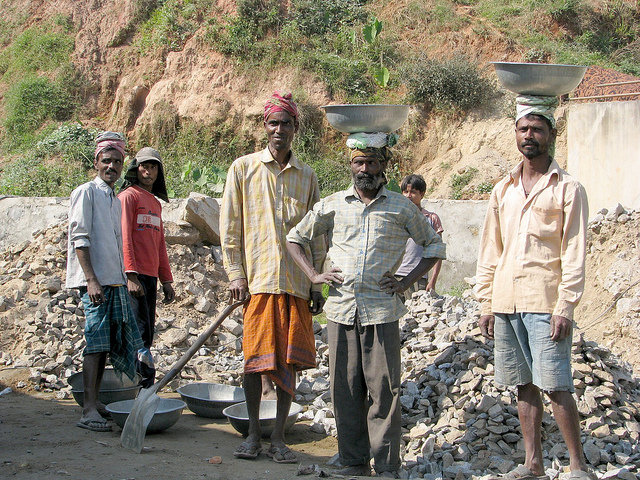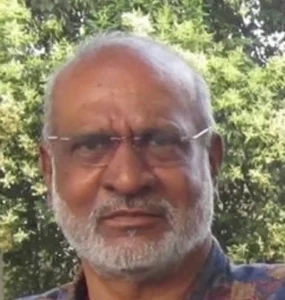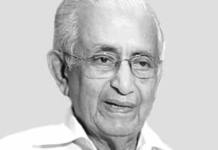— MOHAN GURUSWAMY —
The spectacle of millions of migrant workers locked in their densely packed shantytowns and desperate seeking to escape their lockdown confinement should be the stuff to catalyze revolutions. But it has got scarce attention, not only from our sensation prone media, but also from the government and political class. In another day and age, the fighters for social justice and purveyors of class war would have leapt into the fray. But not anymore. Let alone Gandhi they have even forgotten Mao. Imagine what a Jayaprakash Narayan or Ram Manohar Lohia would have done in a similar situation?
Sometime in early 2000 I accompanied former Prime Minister Chandrashekhar to Khammam in Telangana where he was the chief guest at a rally of farm workers organized by the Communist Party of India (CPI). Khammam was once the epicenter of the “Telangana Peasants Armed Struggle” (1946-51), a peasant rebellion against the feudal lords of the Telangana region in the princely state of Hyderabad. It continued well after Police Action and the integration of Hyderabad into India and was only called off after Joseph Stalin’s death and the advent of NS Khrushchev.
Khammam continued to be a red bastion till well into the 70’s. It was a fairly large rally and the audience sat under the noonday sun with stoicism, which is still the hallmark of our informal workers. The then CPI general secretary late AB Bardhan rode back with us to Hyderabad, during which I asked him as to why was the CPI unable to organize farm and informal sector workers nationally? Bardhan candidly replied that communist organizers, both in the CPI and CPM, were more interested in organized sector trade unionism for the usual reasons. It was much easier and often lucrative.
The working class is nothing without the unorganized workers. In 2019, there were around 510 million workers in India, of these over 94 percent or about 494 million work in farms, unincorporated, unorganized enterprises ranging from pushcart vendors to home-based diamond and gem polishing operations.
The organized sector includes workers employed by the government, state-owned enterprises and private sector enterprises. In 2018, the organized sector employed about 30 million workers, of which about 23 million worked for the government or government owned entities. The other seven million were employed by India’s organized sector, where the trade unionism is concentrated; with the trade unions affiliated to all our political parties fiercely compete for membership and a lucrative revenue stream. Does it come as any surprise that the biggest unions the Bharatiya Mazdoor Sangh (BMS) is a RSS affiliate, while the INTUC is a part of the Congress Parivar.
Most of our unionized work force are now middle and upper middle class, but have typically arrogated the right to be deemed working class. “Working class” is a socioeconomic term used to describe persons in a social class marked by jobs that provide low pay, require limited skill, or physical labor.
Typically, working-class jobs have reduced education requirements. This is not so in India anymore where aggressive trade unionism, coercive collective bargaining and a soft state have resulted in a well to do enclave, that guarantees life term employment and extra-legal benefits such as compulsory minimum bonus. and often with even guaranteed employment to a son or daughter.
The sense of security has foisted a degree of indiscipline and a culture of low productivity on the shop floor and office space. This makes organized labor generally high cost and low productivity. Ironically this only impels a greater reliance on automation and the system of exploitative contract labor.
This invulnerability of this “working class” to economic reality has disincentivized industrial expansion and promoted the mushrooming of contract manufacturing, and even flight of capital overseas. It doesn’t take much to form a trade union. In factories with up to 70 workers, seven workers can form a trade union and in factories with more than 70 workers, at least 10 per cent workers can file an application to form a trade union. The proliferation of the SMEs is often a ploy to keep employment below this level.
A little more than half the workers in the unorganized sector or about 270 million are agricultural workers, with the rest (220 million) in services, construction, and small factories and workshops. After the lockdown, the respected Center for Monitoring the Indian Economy (CMIE) estimates that 122 million of these have lost their jobs. Of these 91.3 millions were small traders and laborers. But a fairly significant number of salaried workers – 17.8 million – and self-employed people – 18.2 million – have also lost work. Within the non-agricultural labor cohort, it is estimated that almost 100 million are migrant workers. It is estimated that internal remittances by these migrant workers are in excess of Rs.2 lakh crores each year.
The lockdown has brought into focus the plight of these migrant workers, all of whom are in the informal sector, without a voice. Paradoxically, the migrant labor force operates in a perfect market with wages determined by the law supply and demand. In a country where anywhere between 6-10 million enter the working age cohort every year, supply is never a problem and helps depress the wages. Besides fending for themselves, what little these laborers have left goes home to sustain their families in Bihar, UP, Orissa, MP and of late even as afar as Assam and the northeast. There can be little money left over for unionizers. Bardhan apparently was right.
Besides most of them are beholden to labor contractors who have the power to pick and choose from among them. It is also common for them to be bonded to these contractors for monies lent in the villages. Is it therefore any surprise that no political party jumped into the fray on their behalf when the harshness of the lockdown descended on them. Even the media took its time to turn the cameras on the horrendous sights of millions making the long trek home.
Recently a few states like UP and MP have scrapped the labour laws related to labour unions, settling work disputes, regulations for working conditions, contracts, among others shall be suspended for three years in the state under this ordinance. This includes, The Minimum Wages Act, The Maternity Benefit Act, The Equal Remuneration Act, The Trade Unions Act, The Industrial Employment Act, The Industrial Disputes Act, and The Factories Act. The UP ordinance includes all the existing industries, manufacturing units and even the new ones that are likely to come up in a few years.
These suspensions have been generally welcomed by businessmen, even though it is unlikely that they will put their money where their mouths are? While it is difficult to shed tears for India’s mollycoddled organized employees, the plight of the migrant workers will only get worse with no legislation to protect them.
Discover more from समता मार्ग
Subscribe to get the latest posts sent to your email.


















